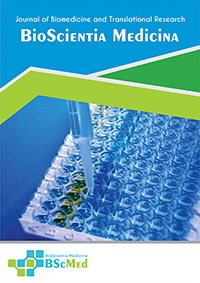Main Article Content
Abstract
Background: Ocular vascular occlusion is a rare, vision-threatening emergency. While typically associated with systemic vascular comorbidities, reports have emerged suggesting a temporal link to various vaccinations. This review aims to synthesize the evidence on ocular vascular occlusion following both COVID-19 and non-COVID travel vaccinations to characterize its clinical spectrum and explore shared pathophysiological underpinnings.
Methods: A systematic search adhering to PRISMA 2020 guidelines was conducted in PubMed, Scopus, Cochrane Library, and ProQuest for studies published from January 1st, 2013, to August 1st, 2024. All study designs reporting ocular vascular occlusion temporally associated with COVID-19 or travel immunizations were included. Data on demographics, vaccine type, clinical presentation, and outcomes were extracted. Methodological quality was assessed using the Newcastle-Ottawa Scale (NOS) for observational studies and the Joanna Briggs Institute (JBI) checklist for case reports.
Results: From an initial 1,348 records, 12 studies met the inclusion criteria, encompassing case reports, series, and large database analyses. These studies described ocular vascular occlusion in individuals aged 15 to 86 years. A significant temporal clustering was observed, with the majority of individual cases occurring within seven days post-vaccination. Central retinal vein occlusion (CRVO) was the most reported subtype. A large retrospective cohort study reported a more than two-fold increased hazard for retinal occlusion post-vaccination compared to unvaccinated cohorts (HR 2.19, 95% CI 1.85-2.59, p<0.001). Both mRNA and adenoviral vector COVID-19 vaccines, as well as various travel vaccines including Zostavax, Yellow Fever, and Meningococcal B, were implicated.
Conclusion: This review characterizes a consistent temporal association between a diverse range of vaccines and subsequent ocular vascular occlusion, suggesting it is a rare but potential adverse event. The clustering of onset times and involvement of different vaccine platforms point towards a common underlying immuno-thrombotic mechanism. These findings highlight the need for clinical vigilance for acute visual changes post-vaccination, while underscoring that the absolute risk remains exceedingly low compared to the clear benefits of vaccination.
Keywords
Article Details
As our aim is to disseminate original research article, hence the publishing right is a necessary one. The publishing right is needed in order to reach the agreement between the author and publisher. As the journal is fully open access, the authors will sign an exclusive license agreement.
The authors have the right to:
- Share their article in the same ways permitted to third parties under the relevant user license.
- Retain copyright, patent, trademark and other intellectual property rights including research data.
- Proper attribution and credit for the published work.
For the open access article, the publisher is granted to the following right.
- The non-exclusive right to publish the article and grant right to others.
- For the published article, the publisher applied for the Creative Commons Attribution-NonCommercial-ShareAlike 4.0 International License.





